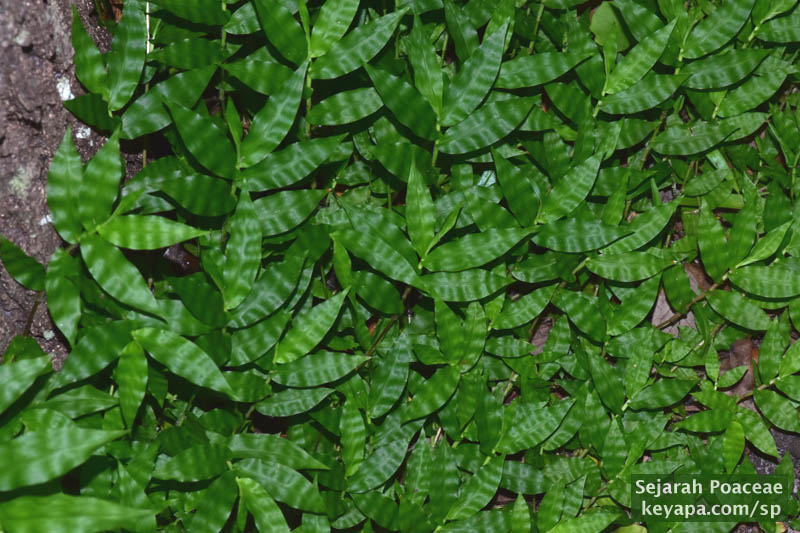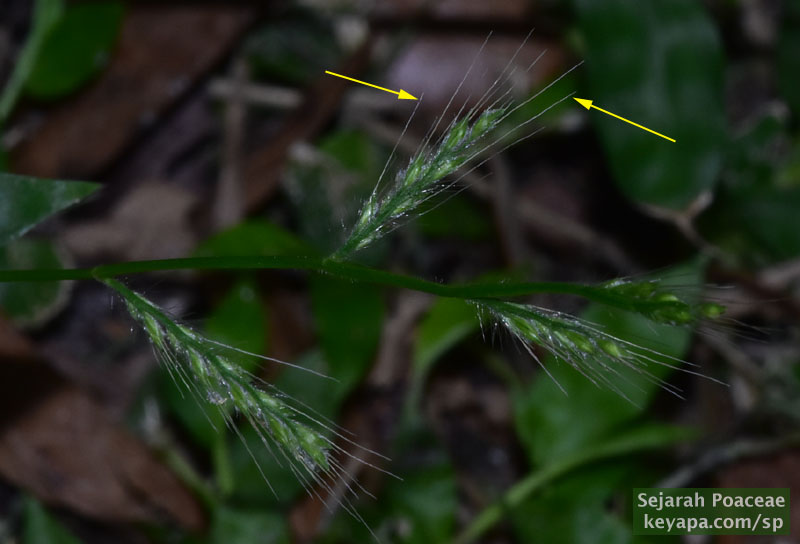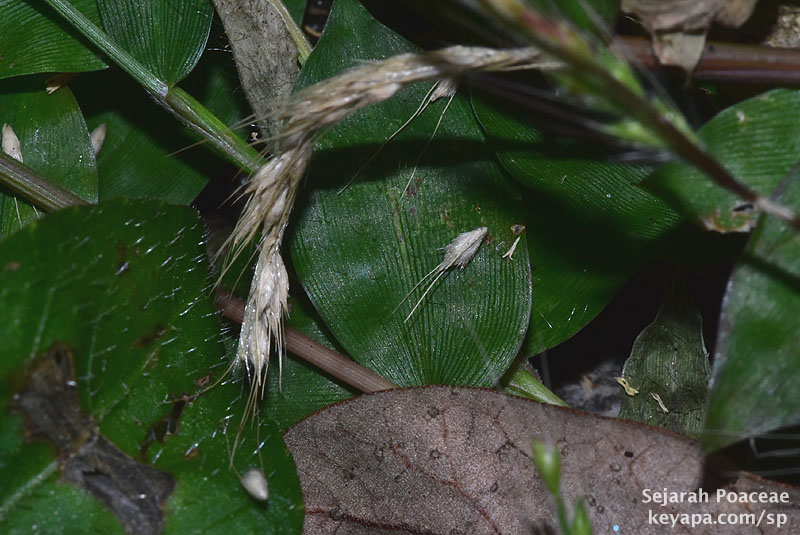
I loved my discovery of the shade-loving Oplismenus burmannii earlier this Summer (July), and so I decided to follow that cluster (and another large nearby one that I also found) as the days passed.
The members of the genus have attractive leaves that sometimes belie the fact that they may be invasive, although there are some studies that indicate even the declared “invasive” Oplismenus undulatifolius in the Northeast USA may not actually be able to push out native plants, but instead takes advantage of gaps in the native plant cover.

My reasons for keeping track of the cluster were two-fold. First, i wanted to confirm the identification of the specimens. The genus here in Florida has three members (Oplismenus hirtellus, Oplismenus setarius, and O. burmannii), and various websites give different descriptions of how to identify each. I picked the website that seemed the most authoritative, and wanted to see whether my identification of the species based solely on vegetative characteristics was correct. Secondly, I was intrigued by the sticky diaspores of O. undulatifolius, and wanted to see first hand whether O. burmannii also had interesting seeds.

I checked on the clusters at least once or twice every week as the time flew by, but they remained stubbornly without flowers. But my weekly observations did not really go to waste, as I noted its relationship with the other plants around it. Although O. burmannii was hypothesized to not really be an aggressive invasive in the area, it seemed that other plants tended to be scarce in those places where it had created large groups.
I also took note of the borders of the clusters. O. burmannii creeps along the ground using above-ground stolons, and I’m determined to see whether it is capable of pushing back the other ground hugging plants that massed along the borders. This will be an ongoing observational experiment, given that the species is a perennial and will likely keep growing its territory every year.

More than two months after I had first taken note of the species, on October 2, I finally chanced upon a few of the ramets that had developing inflorescences. The pointed awns were numerous and long and of a definite pale color, which indicated that this was indeed O. burmannii.
I had to restrain my excitement however, as it took another week before I found some that had developed enough to show a few dangling stamens and stigmas.
And the stigmas were a silvery white!
This confirmed my identification of the specimens as O. burmannii, and not the other two members of the genus in Florida. Both O. hirtellus and O. setarius are not only larger, but they also have reddish colored stigmas and awns.

By October 18, another week or so later, some of the spikelets had morphed into maturing pale white diaspores, which to my disappointment were not as strange looking as those of O. undulatifolius. Nevertheless, they intrigued me, mostly due to their overall pale white coloration, which seemed almost fungoid (although they finally did turn a dry light brown color).
The awns of the related O. undulatifolius are sticky, which helps the diaspore to stick to passing animals and other potential means of dispersing the seeds. But when I touched the the seeds and matured spikelets of the O. burmannii specimens, none were sticky. Instead, I found several of the tiny seeds (probably 2 mm in length) lying scattered and dried on leaf surfaces.

Finally, like many in the genus, O. burmannii indulges in self-pollination or autogamy, which simply means that it does not depend on pollen from another plant getting to its waiting stigma via wind or some other method of dispersal. Instead, each inflorescence is fully capable of pollinating itself and producing viable seeds. This is obviously a winning strategy for the species, and a process which I hope to explore more in future in this species and others like it.

Leave a Reply